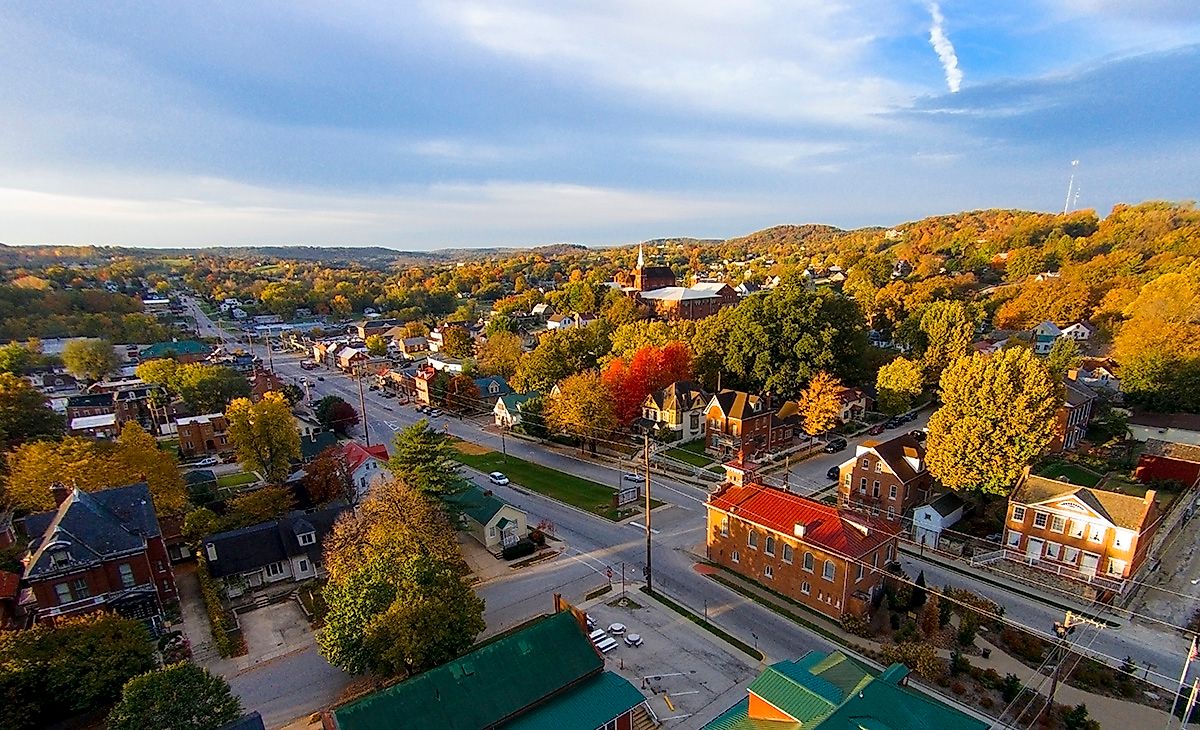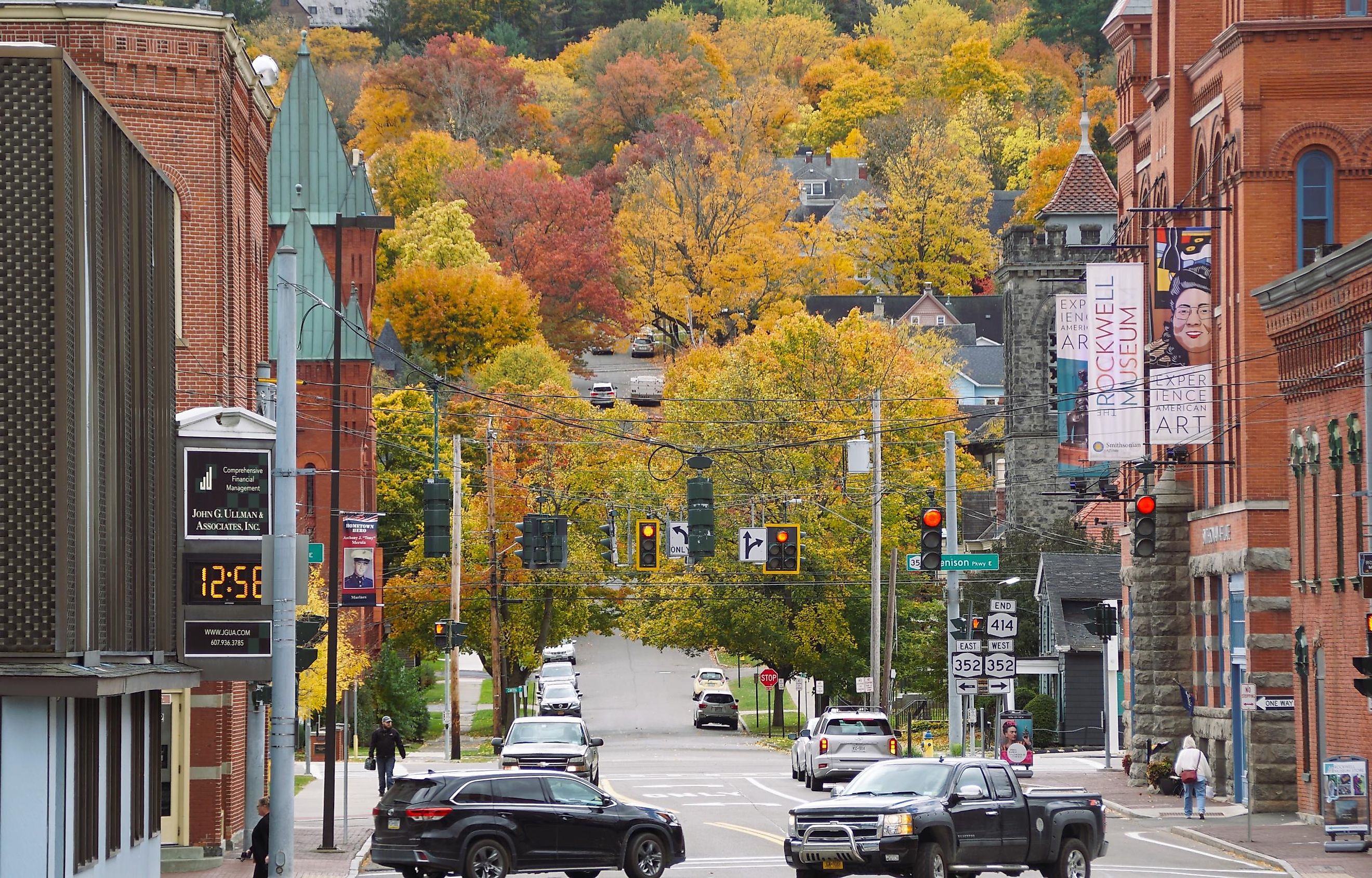
10 Towns in New York With a Rich History
Few places across the United States boast as much historical richness as New York State. In 1624, what is presently known as New York had its beginnings with a small Dutch settlement called New Amsterdam.
This settlement gradually underwent a huge transformation, culminating in the megacity we know and love today, New York City. In the 18th century, New York State took its position amongst the inaugural group of thirteen colonies that made up the United States of America.
From battlegrounds to iconic historical businesses, the state’s towns have a diverse collection of cultural and heritage-rich attractions. Discover New York State’s past by checking out these ten towns in New York.
Skaneateles
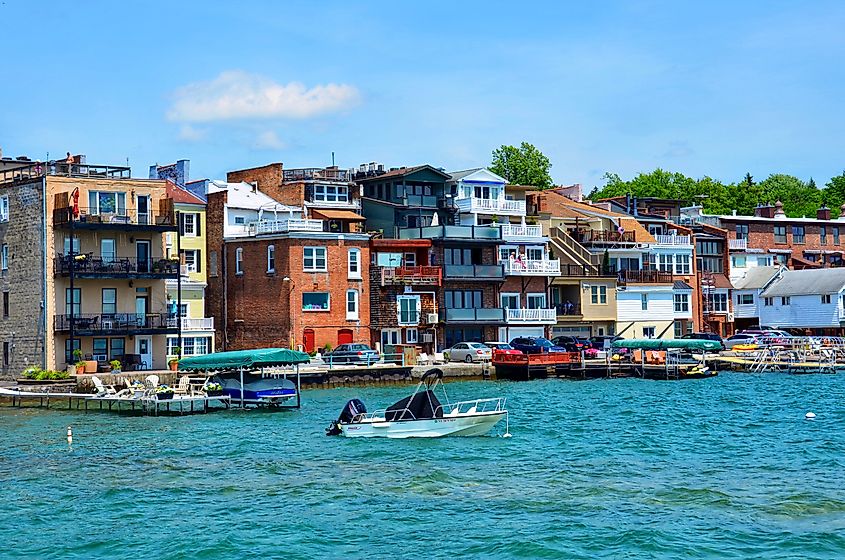
Picture a gorgeous super-clear lake, old-timey buildings, and a cool artsy vibe. That is Skaneateles. It has history, amazing views, lots of stuff to do, and all wrapped up in a small-town feel.
One of those local gems is the Creamery Museum, a cherished relic of the Skaneateles Historical Society. The museum lies inside a building built back in 1899 and teaches about the town's bygone dairy trade.
It serves as a portal into regional heritage, featuring displays about pioneer settlers and economic contributions stemming from the beloved creamery.
You have some options when you are in town. Want to see some historical buildings? Check out Roosevelt Hall, with its colossal white columns and white exterior. It got its name after President Theodore Roosevelt visited the area.
Anybody in the mood to hit the outdoors should go to nearby Skaneateles Lake and enjoy some of the cleanest waters in the entire country. Swimming? Fishing? You can do it all.
Ticonderoga

Ticonderoga, found at the utmost northern tip of Lake George in the state of New York, nudges up against Vermont's border.
One of the most important spots in town is Fort Ticonderoga. This 18th-century fortress, which stands out with its star-like architecture, holds a pivotal place in American Revolutionary history.
American soldiers, among them Benedict Arnold, wrested control of the fort from British hands. Now it serves as an exhibition space and a historic location, teaching the public about the event.
Not far away from there, Mount Defiance overlooks Fort Ticonderoga and also played a crucial role in the American Revolution. Perched upon Mount Defiance, American forces positioned artillery, attacking the fort beneath them with a barrage from above. Today, visitors can walk up to this historic peak and get some sweeping views of its surroundings.
You might have held a piece of Ticonderoga heritage in your hands without realizing it. The Ticonderoga Company, creators of those "Ticonderoga" pencils, was named after the town. The famous pencil is known for its quality worldwide.
Oyster Bay
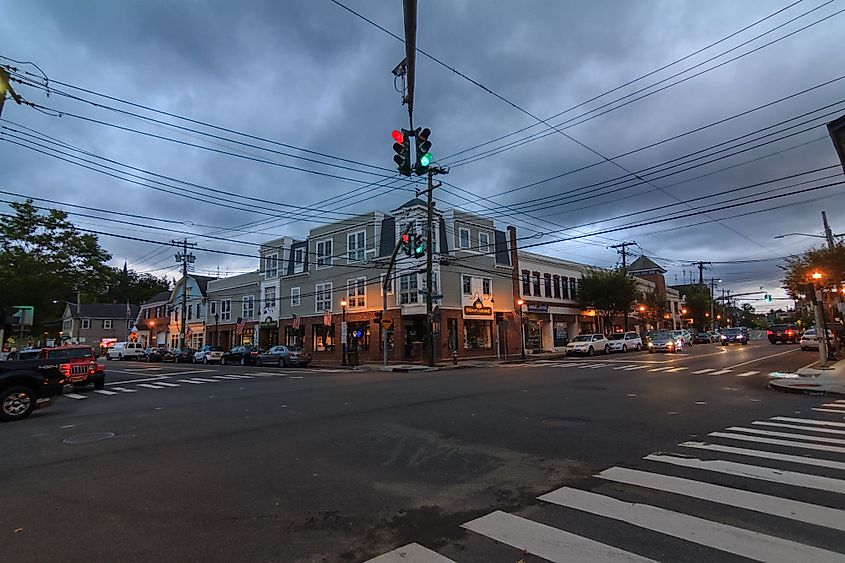
The name might be a clue that Oyster Bay got its title from the town's oyster cultivation. During the 1800s, the town transformed into a sought-after destination for those seeking exceptional East Coast oysters.
Not many towns can boast of having a U.S. President as one of their residents. Oyster Bay can.
Often called the "Summer White House", Sagamore Hill was a real estate possession of President Theodore Roosevelt and he often stopped in during the warmer seasons.
Now they preserve the history and everything related to Roosevelt's life there and Sagamore Hill is recognized as a National Historic Site.
If you are stopping into Oyster Bay, make sure to see the Planting Fields Arboretum State Historic Park, featuring Coe Hall, an early-20th-century Tudor Revival mansion, with perfectly tended gardens offering peacefulness far removed from urban hustle-bustle.
There is also nature all around. Long Island's commitment to the conservation of nature is portrayed through the Oyster Bay National Wildlife Refuge. This estuary system remains of one the region's largest unaltered natural habitats.
Sleepy Hollow

Back in the day, this town was known as North Tarrytown, before adopting its iconic name in 1996.
Sleepy Hollow is the birthplace of Washington Irving's 1820 story The Legend of Sleepy Hollow. The town's name became known around the world, thanks to the story.
It is also home to an array of stunning and preserved structures, many listed on the National Register of Historic Places.
In particular, Patriot's Park, once called Brookside Park, is a four-acre expanse paying tribute to Major John André's capture during America’s Revolutionary War period. This was the catalyst which led to Benedict Arnold’s espionage being revealed.
Another one to see is the Philipse Manor Railroad Station, built at the start of the 20th century. The structure is an example of an early commuter rail station in Tudorbethan architecture, with half-timber wood frames and steeply pitched roofs.
New Paltz
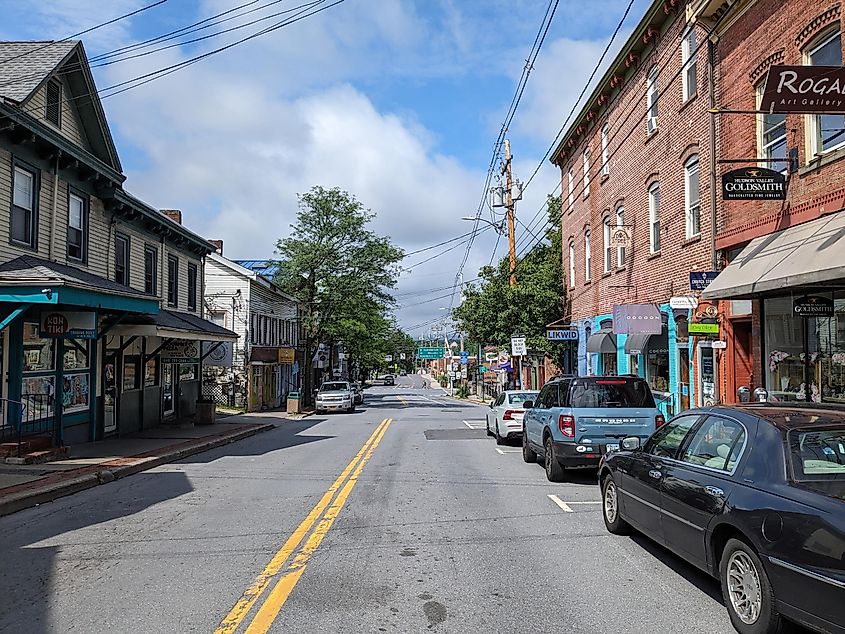
When you get to New Paltz you will stumble upon one of the longest-standing, persistently occupied streets on U.S. soil. Historical enthusiasts or even curious tourists can journey to Historic Huguenot Street and feel like they are poking their heads back into the time of the 17th-century American settlers.
The entire area around the street is called the Huguenot Street Historic District. What sets this 10-acre location apart is its assembly of rock-built residences, tracing their origin back to the late 17th century and into the early 18th. The dwellings were homes for generations of people, descendants of the original Huguenot settlers who arrived in 1678.
Near town, nature lovers can enjoy exceptional attractions like the Shawangunk Mountains. They offer some of the premier climbing experiences on this side of the country.
Another good option is the Mohonk Preserve, only 10 minutes away by car. It comes with miles of hiking paths, and great views that are capped off with the Victoria-era Mohonk Mountain House.
Corning
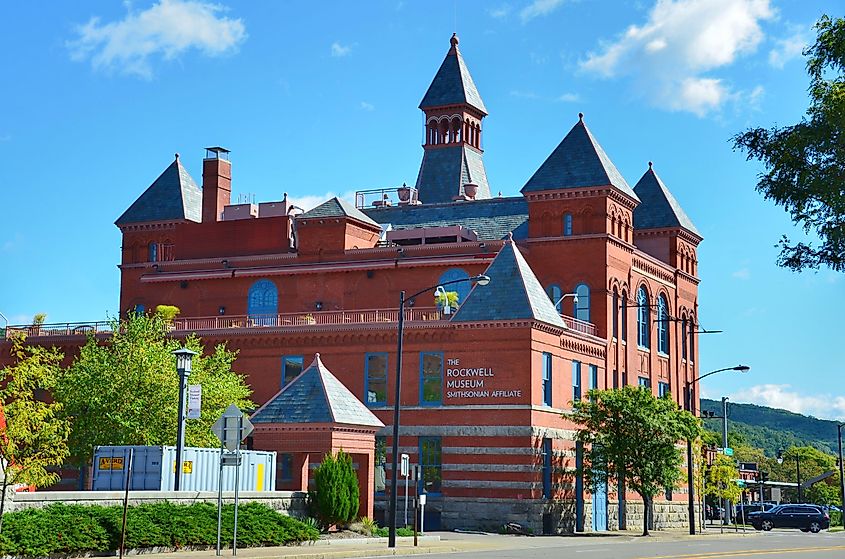
An interesting history is tucked within Corning, a small town noted for its connection to the glassware and ceramic industries. This is due to its association with the famous company known as Corning Incorporated.
The company stands tall as a leader within cutting-edge fields of materials science along with advanced glass formulations. Even today, the town is an important cog for both the glass and ceramic world.
If you want to learn about it more yourself, look into the Corning Museum of Glass, a gem in glass antiquity. It has a collection covering more than 3,500 years of glassmaking history, you can see all sorts of art and historical pieces.
The town's main street, Market Street, has a vibrant and fun atmosphere. It is lined with historic buildings to gawk at, so if you are in the mood for a peaceful walk outside, Market Street is calling.
Speaking of calling, is the outdoors calling to you? The town lies on the edges of the Finger Lakes and is a gateway to all the outdoor adventures the lakes can offer.
Ellicottville

Even though only 300 people live in the village of Ellicottville, it has a lasting historical importance in American history.
The town was a vital part of the Underground Railroad. Due to its northern location and the presence of anti-slavery supporters in the area, it became a secret and critical stop for fugitive slaves seeking freedom in Canada.
Ellicottville has a distinct historic appeal, evident from its immaculately preserved architecture hailing from the 19th century. The village's essence is embodied within the Ellicottville Historic District, listed on the National Register of Historic Places. The districts have an array of architectural designs originating in both the 19th and early parts of the 20th century.
One of the nicest buildings in town is the Ellicottville Town Hall. Built in 1829, it replaced an old log courthouse and jail that sat in the same location. The bold red brick exterior and white cupola are hard to miss.
This town is also known for its skiing and snowboarding. Near the town, you can try Holiday Valley Resort and HoliMont, both of which help make the town among the Eastern United States' premier destinations for skiers and snowboarders.
Greenport
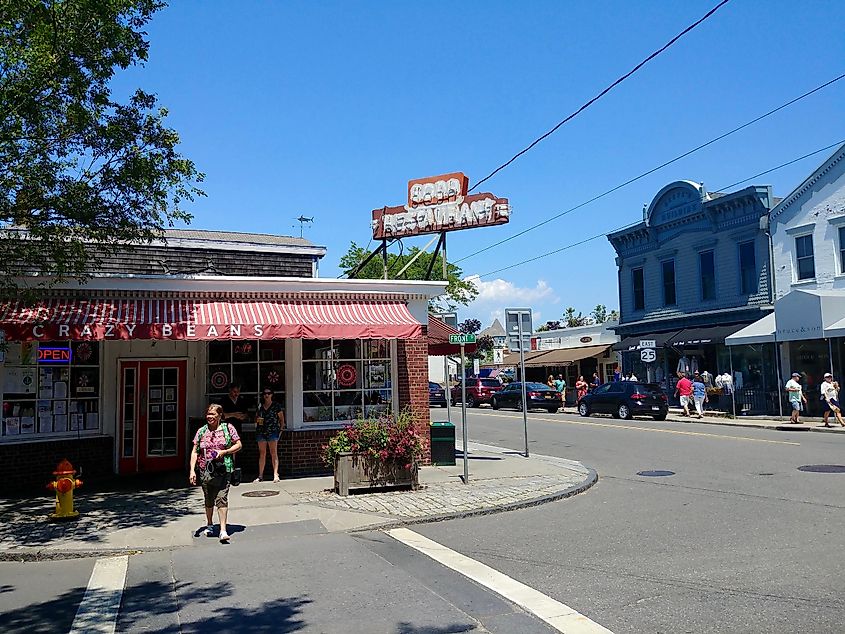
This town holds a rich past, steeped in the whaling and ship-making trades of the 19th century. During this period, it emerged as one of America's primary spots for whalers, significantly contributing to New England's prosperity at the time.
If you like wine, the area has some great ones. The North Fork region, celebrated for its vineyards and wineries, prospers thanks to its unique climate and soil composition.
If you are in Greenport, just loosen up. Walk over to the quaint Historical District of Greenport Village, which appears on the National Register of Historic Places.
This locale is an embodiment of architectural heritage. The structures here bear witness to the progression of the town, from its founding roots through to the advent of the 20th century.
A cherished community icon, the Greenport Carousel, stands as an age-old wonder spun from artisans' hands in the 1920s. One of only a handful of still-functional carousels across America, it charms both young hearts and grown-ups alike.
Rhinebeck

When you come to Rhinebeck, it will not be long until you feel that perfect small-town comfort. Rhinebeck's charm manifests through an affable atmosphere catering to both residents and visitors.
The town prides itself in being home to Beekman Arms, recognized as the oldest running inn in New York State. Started in 1766, this piece of history remains an integral part of Rhinebeck's past and continues to impress guests with its antiquated appeal.
The town also has a historic connection to President Franklin D. Roosevelt. The Rhinebeck Post Office, a 1930s building inscribed on the National Register of Historic Places, is an homage to Dutch Colonial-style architecture.
This style choice was influenced by Roosevelt, who had an interest in the architectural heritage of Dutchess County, where his family's ancestral home was located.
Its design lies in President Franklin D. Roosevelt's decree it takes after "Kipsbergen," a home from the 18th century found within his family history. You will recognize it when you see it, with its bulky imposing roof and twin chimneys.
Kingston

Back in 1652, Dutch settlers established their roots in Kingston and named it Wiltwyck. It was later renamed Kingston when the British took control of the New Netherland colony.
Kingston was named New York State's first capital in 1777. However, after being burned by British forces during the Revolutionary War that same year, the state government operated from various towns.
Long-standing connections between the town and the Netherlands heritage persist, visible in buildings such as the esteemed Old Dutch Church. Established in the 1600s, this church is now one of America’s oldest congregations still active today.
This once-bustling Hudson port town has undergone an artistic revival and presently enjoys a lot of affection for its character and charm.
The historic Rondout district gets attention as an expressive art hub, with galleries and studios attracting artists and patrons alike.
In addition to its art scene, Kingston's maritime past also gets its moment under the spotlight at the Hudson River Maritime Museum. This spot teaches the town’s historical importance through trade operations and the transportation of goods and people.
In Conclusion
The Empire State is a pivotal piece of the grand American story, its past integral to understanding the nation in all its complexity.
Be it immersing yourself in the electric pulse of New York City or losing your heart to small towns like Ellicottville, every corner tells a chapter from the state's ongoing chronicle.
So, if your interest is in understanding the industries that gave birth to the state or studying about the people who protected the United States during the early days, New York State is for you.
